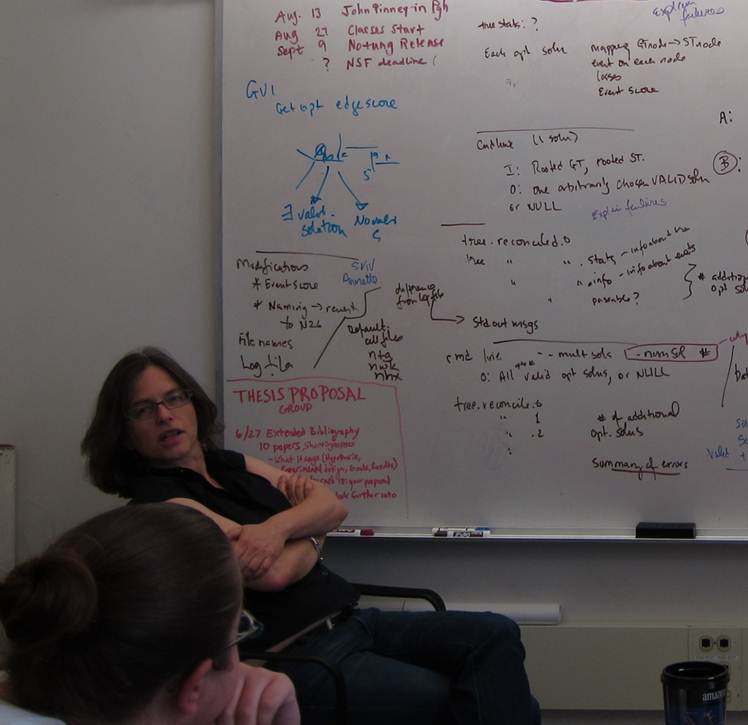 News stories about our work.
News stories about our work.

How does nature make new genes and do new genes make us what we are? All
modern vertebrates share roughly the same set of genes, about twice as many
genes as our nearest invertebrate neighbors. This increase in gene number
coincides with dramatic morphological innovations, such as large body size,
myelanated nerves, good coordination, and better sensing. What events caused
this dramatic increase in gene number and were those events responsible for the
concomitant organismal evolution?
The classical explanation is that two whole genome duplications occurred early
in vertebrate evolution. Some of the resulting copies were lost due to
mutation while others evolved new functions, driving vertebrate developmental
innovation. Recent analyses of genomic data suggest that the story is more
complex: new genes also arise through mixing and matching of sub-genic modules
or domains; subsequences that typically exhibit a high degree of
sequence conservation, encode structural sub-units that can fold independently
and are associated with a particular protein sub-function. Compared with the
fly and worm genomes, the human genome is characterized by dramatic expansion
of multi-domain gene families with roles in immune response, regulation, signal
transduction and the cytoskeleton, suggesting their potential importance in
vertebrate developmental and morphological innovations. Taken together, the
evidence suggests that duplication and subsequent mutation of genetic material
on a range of scales, from domains to the entire genome, played a role in these
increases in vertebrate gene number and complexity.
The Durand Lab investigates these phenomena through three types of activities:
the development of computational methods for whole genome analysis, application
of those methods to genomic data, and the interpretation of the results in
light of contemporary gene and organismal function. Current research efforts in
the laboratory include
- statistical tests for recognizing significant patterns in gene organization on chromsomes,
- the role of large scale duplication in the evolution of insulin,
- homology identification for multi-domain protein families,
- tree-based methods for estimating gene duplication times,
- the role of duplication in pathway evolution.
-
Bacteria's
Password for Sporulation Hasn't Changed in 2.7 Billion
Years
Think your passwords are old? J. Duffy, 25 Sep 2018
-
Design Rules for Multidomain Proteins Across the Tree of
Life
NSF announces new awards for Understanding the Rules of Life 21 Sep 2018
-
HIP1
does the wave
Our collaboration with Jeffrey Lawrence on cyanobacterial genome architecture. 23 Mar 2018
-
Identifying cryptic orthologs in bacterial signal
transduction pathways.
Philip Davidson talks about his doctoral work in the Durand Lab
-
Bacterial Gene Acquisition May Drive Niche Expansion
Probing horizontal transfer in Streptococcus pneumoniae with Luisa Hiller.
-
New Names for Old Gene Transfers
Matthew Salyer's story on our work on xenolog classification.
Recreating
Ancient History
-
Carnegie Mellon Team Tackles Challenge of
Homology Analysis for Multidomain Proteins
Vivian Marx, Bioinform, 2008
-
Interdisciplinary
Crosstalk
Bridging the communication divide between biologists and Engineers. K. Cushman and J. B. Donovan, HHMI Bulletin, Vol. 18, No.3, 12/05.
- Scientist uncovers genetic history, J. Bails, Pittsburgh Tribune Review, 7/3/05.Pittsburgh Tribune-Review
- A Gene's family tree A. Boyle, Cosmic Log, 17 May 05
- Packard Fellowship, NIH Grant Launches Dannie Durand's Study of Genes Carnegie Mellon News
Amy Pavlak, MCS News and Events, 2014